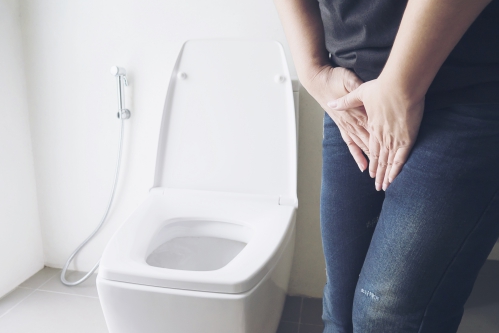What is a urinary tract infection?
A urinary tract infection (UTI) is when there is an infection in the tracts through which urine pass. The urinary tract comprises of the kidney, ureters, bladder and urethra. UTIs are the commonest infections in humans. In addition, it is most commonly caused by bacteria but can be also rarely be caused by fungi and virus. Women are more at risk of developing UTIs than men.
The lower tract, that is, your bladder and urethra are most commonly affected. Furthermore, infection of the upper tract which comprises of the kidney and the two ureters are usually more severe and leads to serious complications.
UTIs are usually treated with antibiotics but several measures can be taken to prevent its occurrence.
What causes a urinary tract infection?
A UTI develops when bacteria enters the urethra, a fibromuscular tube connecting the bladder to the outside of the body. Infection of the urethra is known as urethritis and when the infection spreads to the bladder it is known as cystitis. The most common pathogen responsible for UTIs is Escherichia Coli (E. coli) which is a bacteria usually found in the gastrointestinal tract.
What are the risk factors of urinary tract infection?
In general, urinary stasis or any other irritants to the urinary tracts can predispose you to develop a UTI. The factors listed below can increase your risk of getting a UTI:

- Previous UTI
- Reduced mobility either due to a medical condition or after surgery
- Advanced age
- Urinary tract obstructions such as kidney stones, enlarge prostate and certain cancers which extend to the urinary tracts causing compression
- Poorly controlled diabetes
- Urinary tract abnormality since birth
- Weakened immune system
- Pregnancy due to compression of the urinary tract by the foetus
There are additional risk factor which are specific to women and these are:
- Wiping from back to front after urinating: This improper hygiene technique may facilitate the entrance of bacteria into the urethra from the area of the anus
- A shorter urethra: The length and location of the urethra in females makes it easier to develop UTIs. The bacteria has a shorter distance to travel to reach the bladder and the urethra is closer to the anus than in men
- Sexual intercourse: During sexual intercourse, bacteria can inadvertently spread from around the anus area to the urethra, facilitating the development of a UTI
- Use of condoms and spermicides can increase your risk of UTI by causing irritation of the genitalia
- Menopause: After menopause, your oestrogen level decreases which causes changes in your urinary tract, making it easier to acquire a UTI

Signs and symptoms
Symptoms of urinary tract infections can be divided into lower tract and upper tract UTIs. The symptoms of lower tract UTI include:
- Passing frequent and small amounts of urine (urinary frequency)
- A persistent urge to pass urine (urinary urgency)
- Burning sensation when passing urine (burning micturition)
- Red, pink or cola-coloured urine- indicating blood in urine (haematuria)
- Foul smelling urine
- Pelvic pain in women and rectal pain in men
- Cloudy urine
When the infection spreads to your upper urinary tract, it can be life-threatening as the bacteria can move from your kidneys into your blood. This condition is known as urosepsis and can lead to severe complications such as shock, low blood pressure and even death. The signs and symptoms of upper urinary tract infections include:
- Upper back and flank pain
- Chills and shaking
- High fever
- Nausea
- Vomiting

Diagnosis of urinary tract infection
The diagnosis of urinary tract infections start by your doctor taking a thorough history and performing a physical examination. This is often enough to diagnose a UTI. However, if it does not subside or your symptoms are getting worse, a urine sample will be required to identify abnormal urine composition, to know which organism is causing the infection and which antibiotics will be effective.

A midstream urine sample is usually required- that is, the sample is taken at the middle of your urinary stream rather than at the beginning. This is to decrease contamination from your skin. The sample is used for 2 different tests:
- Urine microscopy: the sample is placed under the microscope to look for crystals, white and red blood cells or bacteria
- Urine culture: the sample is taken and placed on a growth medium to allow the bacteria to grow. Then the organism causing the infection is identified and several antibiotics are placed on the medium to know which ones are effective against it. This is because bacteria can develop resistance against antibiotics
If your doctor suspects that you have an upper UTI, he/she will order a complete blood count (CBC) and a blood culture. This is useful in determining whether the infection has spread into your blood which may lead to devastating effects or to know the severity of the infection by looking at your white blood cell count.
If you suffer from recurrent UTIs, you doctor will order more tests to know if there is any structural abnormalities or obstructions in your urinary tract and these include:
- Ultrasound: this test uses ultrasound waves to visualize your urinary tract
- Intravenous pyelogram (IVP): a dye is injected into your body and an x-ray is taken. The dye will make your urinary tract visible and any obstructions or leakage will be identified on the x-ray
- Cystoscopy: a small camera is inserted through your urethra into your bladder
- CT scan: this test provide superior anatomic details about your urinary tract

Treatment of urinary tract infections
The treatment of your UTI will depend on the type of organism causing it. Bacteria are treated with antibiotics, viruses with antivirals and fungi with antifungals.
Antibiotic treatment
The intensity of the antibiotic therapy depends on whether you have a lower or upper UTI. The lower UTI is treated using oral antibiotics such as nitrofurantoin, ciprofloxacin and fosfomycin. On the other hand, upper UTIs are treated using intravenous antibiotics. This form of administration works faster as the drug is delivered directly into your veins. The antibiotics include ciprofloxacin, levofloxacin, piperacillin-tazobactam and meropenem amongst others.
Home remedies
Home remedies alone will not cure your UTI. However, it may fasten your recovery by helping your body clearing the infection. These includes:
- Cranberry juice
- Drinking plenty of water will help to flush bacteria out of your body
- Do not hold your urine: ignoring the urge to urinate may facilitate the growth of bacteria in your urinary tract
- Vitamin C will boost your immune system and acidify your urine making it difficult for bacterial growth
- Probiotics replace “bad bacteria” with good ones reducing the recurrence of UTIs

Complications
UTIs rarely lead to complications when treated early and properly. However, if left untreated it can lead to:
- Permanent kidney damage from kidney infections (pyelonephritis)
- Recurrent infections
- Increased risk of low birth weight or premature infants in pregnant women
- Urosepsis which is a life-threatening condition
- Urethral narrowing (stricture)
Prevention
Several steps can be taken to prevent the occurrence of UTIs:
- Females should wipe from front to back after urinating or bowel movements to prevent bacteria in the anal region from spreading to the vagina and urethra
- Drink cranberry juice
- Drink plenty of water
- Urinate after having sexual intercourse
- Avoid the use of unlubricated or spermicide-treated condoms as it can irritate your genitals, making it easier to be infected
Prognosis
Most of the time, UTIs respond well to treatment. Once the diagnosis made and treatment started, you should normally notice that your symptoms are improving rapidly. It is important to follow your doctor’s instructions carefully to achieve the best results and prevent complications.


Source:
J. Alastair, I. and Simon, M., 2016. Davidson’s Essentials of Medicine. 2nd ed. London: ELSEVIER.
Parveen, K. and Michael, C., 2017. Kumar & Clarks Clinical Medicine. 9th ed. The Netherlands: ELSEVIER.








